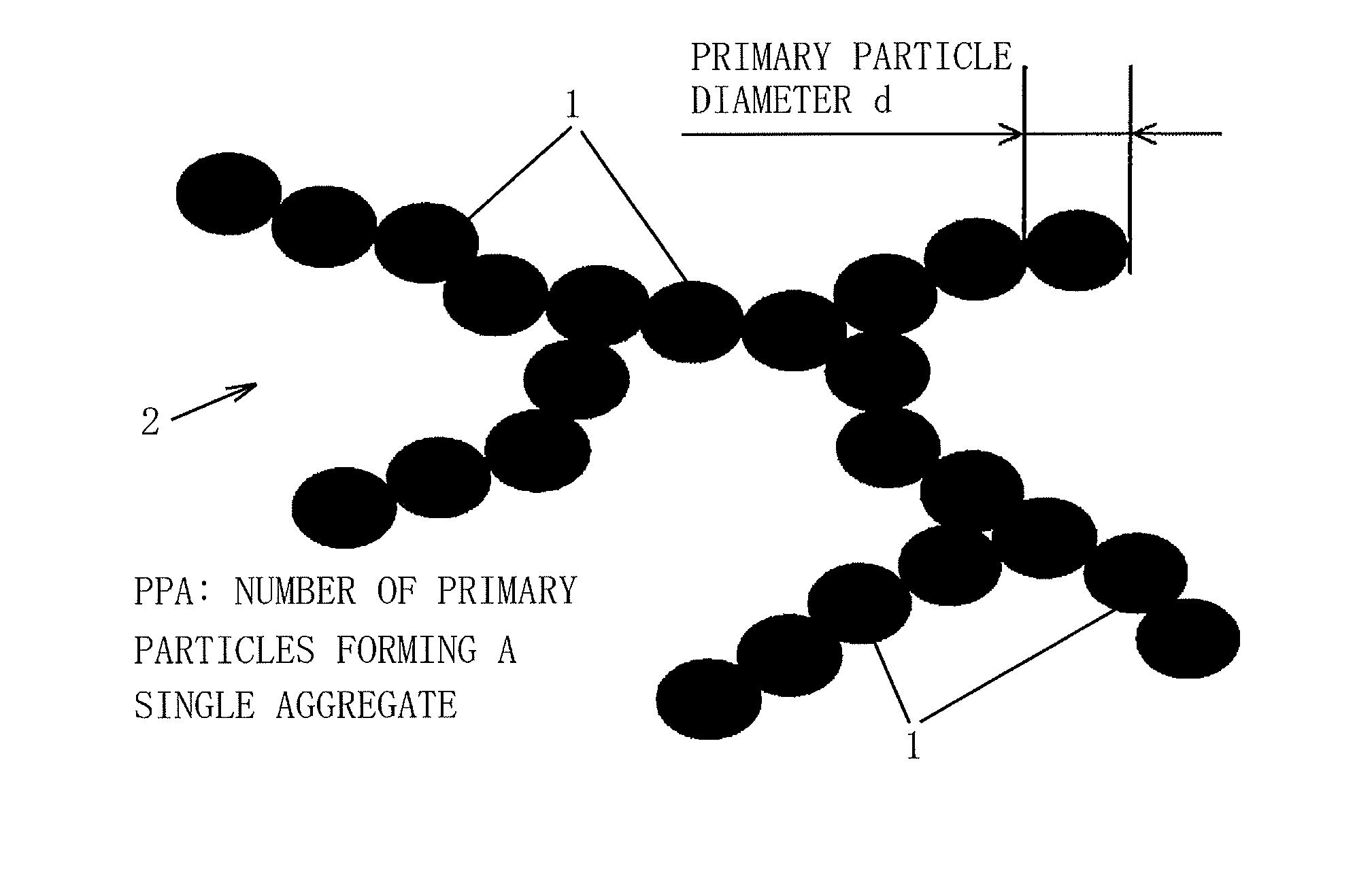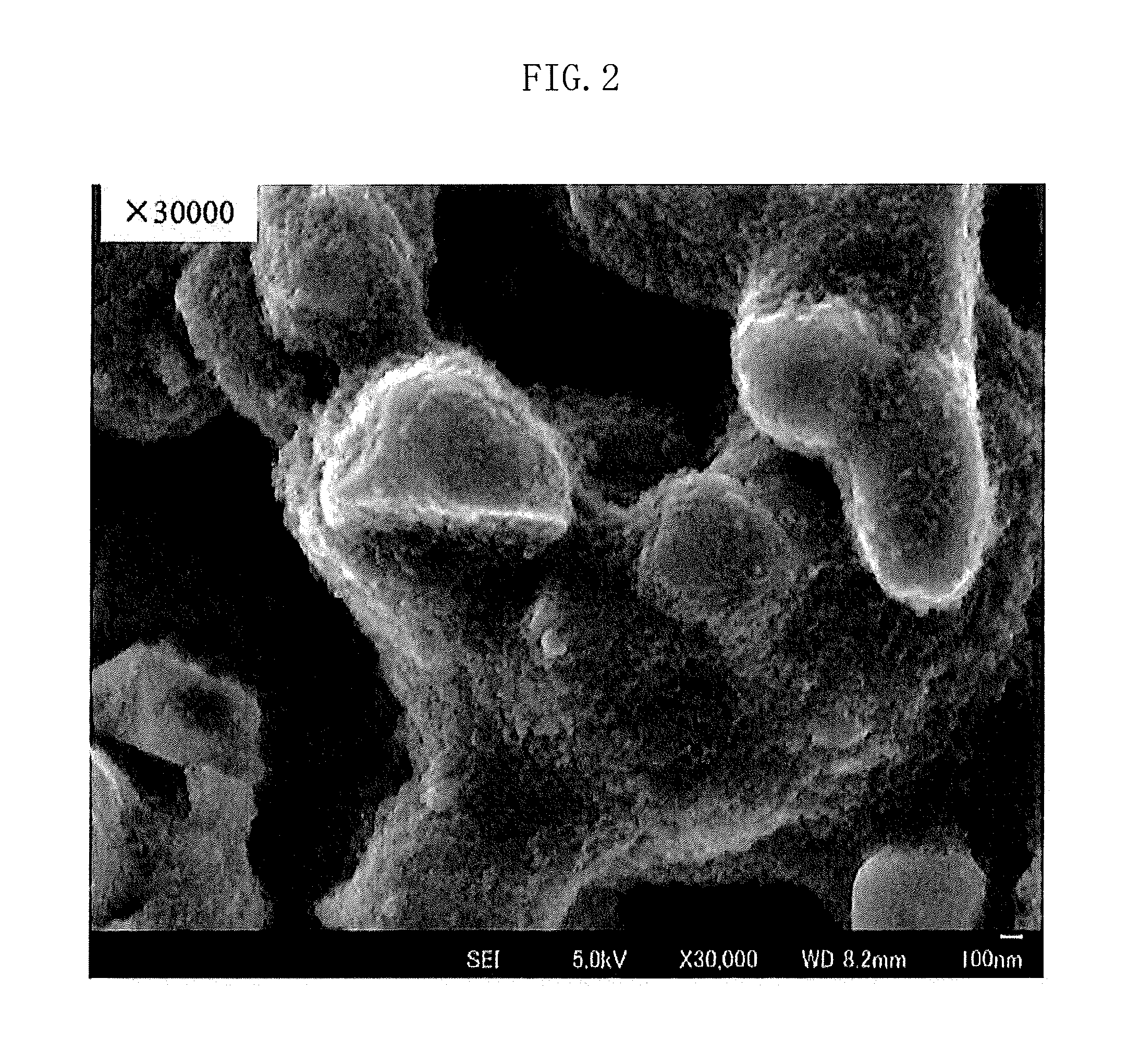Carbon black and secondary cell using the carbon black as electroconductive agent
- Summary
- Abstract
- Description
- Claims
- Application Information
AI Technical Summary
Benefits of technology
Problems solved by technology
Method used
Image
Examples
examples
[0030]Specific examples of the present invention will be described with reference to the diagrams.
[0031]The present example is a carbon black structured as an electroconductive agent of a secondary cell, and is a carbon black comprising carbon black aggregates 2 in which the ratio PPA / d of the number of primary particles 1 (PPA) and the diameter d (nm) of the primary particles 1 is 8 or higher, as shown in FIG. 1.
[0032]More specifically, the carbon black of the present example has a ratio PPA / d of the number of primary particles 1 (PPA) and the diameter d (nm) of the primary particles 1 that is 8 to 12, and the diameter d of the primary particles 1 is 15 nm or less.
[0033]The carbon black of the present example can be manufactured using a common carbon black manufacturing furnace, specifically, a carbon black manufacturing furnace having a connected reaction-continuing and cooling chamber provided with, in sequence from the upstream side, a fuel introduction section, a starting mater...
PUM
 Login to View More
Login to View More Abstract
Description
Claims
Application Information
 Login to View More
Login to View More - R&D
- Intellectual Property
- Life Sciences
- Materials
- Tech Scout
- Unparalleled Data Quality
- Higher Quality Content
- 60% Fewer Hallucinations
Browse by: Latest US Patents, China's latest patents, Technical Efficacy Thesaurus, Application Domain, Technology Topic, Popular Technical Reports.
© 2025 PatSnap. All rights reserved.Legal|Privacy policy|Modern Slavery Act Transparency Statement|Sitemap|About US| Contact US: help@patsnap.com



